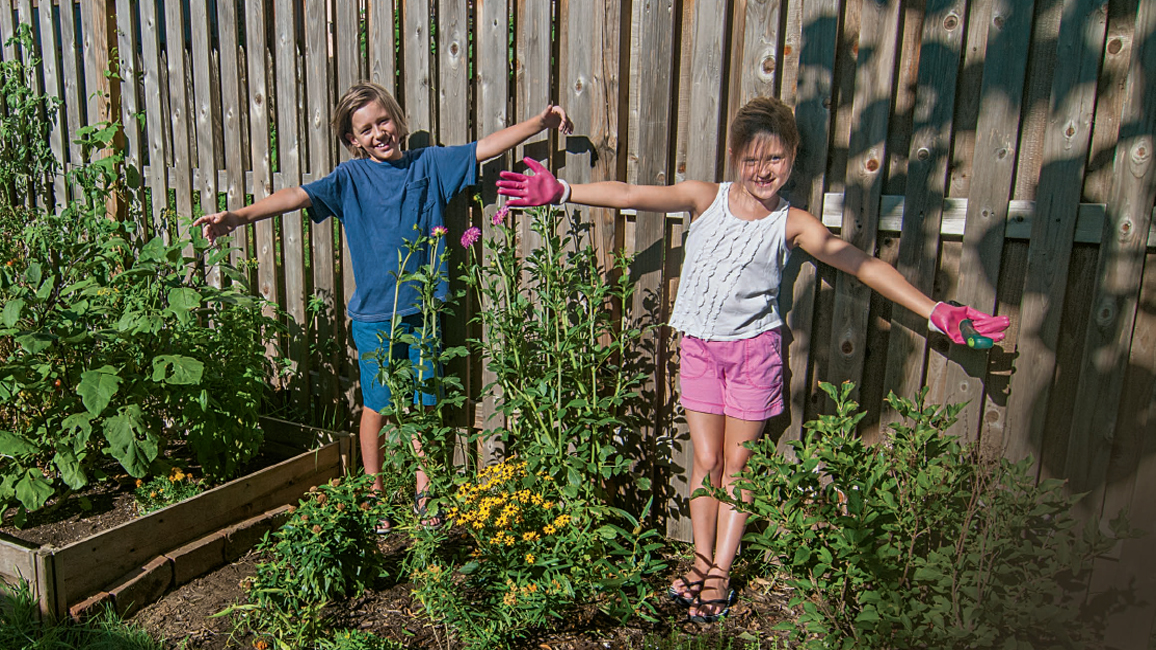
Planting Our Wild Garden
By August, age 10 and Rebecca, age 8. Photos by Susan McElhinneyWe have a small yard in the middle of a big city. But we didn’t let that stop us from planting a garden that’s just right for butterflies, bees, and other wildlife!

Our house is in the middle of Washington, D.C., not far from the U.S. Capitol. Compared to many suburban yards, our backyard is pretty puny. Until recently, it was just a patch of grass—OK, mostly weeds—with two small beds for vegetables.
But last spring, we decided to turn our weedy patch into a pollinator paradise. Pollinators are the bees, butterflies, and other animals that carry pollen from flower to flower as they feed on nectar. Most plants can’t produce fruit or seeds without them. And in a big, bustling city, pollinators need all the help they can get!

5 Steps to a WILD Garden
For help creating a garden that’s abuzz with bees and other pollinators, have your parents check out nwf.org/gardenforwildlife.
- PLAN AND PREP.
Most flowering plants need a lot of sunlight. So for our new garden, we chose a part of our yard that gets full sun. In fall, we put down thick layers of composted leaves, newspaper, and mulch. Over the winter, the grass beneath died off. By spring, the layers had decomposed, leaving beds full of rich soil and happy earthworms. - PICK YOUR PLANTS.
At a local nursery, we bought pollen-rich plants that grow naturally in our area. We chose bee balm, black-eyed Susans, calamint, native roses, and two types of milkweed, along with a few packets of bird-friendly wildflower seeds. We also picked out tasty tomatoes and herbs for ourselves—and eggplant for our parents. - PLANT AND SOW.
Pay attention to the planting directions that come with your plants and seed packets. But don’t be too disappointed if not all your seeds sprout. We watched cardinals, goldfinches, and other birds gobble up many of our wildflower seeds before they had a chance to grow! - WATER AND WEED.
At first, we watered our new plants every few days. Later, we gave them a good soak only when the plants really needed it. And remember: Chemicals that kill weeds can also hurt the plants and animals in your yard. So pull weeds by hand. It’s not hard when you do a little each day! - OBSERVE AND ENJOY.
By early summer, all the flowers started to bloom. Our yard turned into a pollinator zoo! We watched bees and butterflies slurping nectar from the flowers. One day, we watched a squirrel carry off every sunflower in the yard! But we didn’t mind a bit. After all, thanks to our hardworking pollinators, we had a great harvest, too: eggplants, tomatoes, and more all summer long.
















